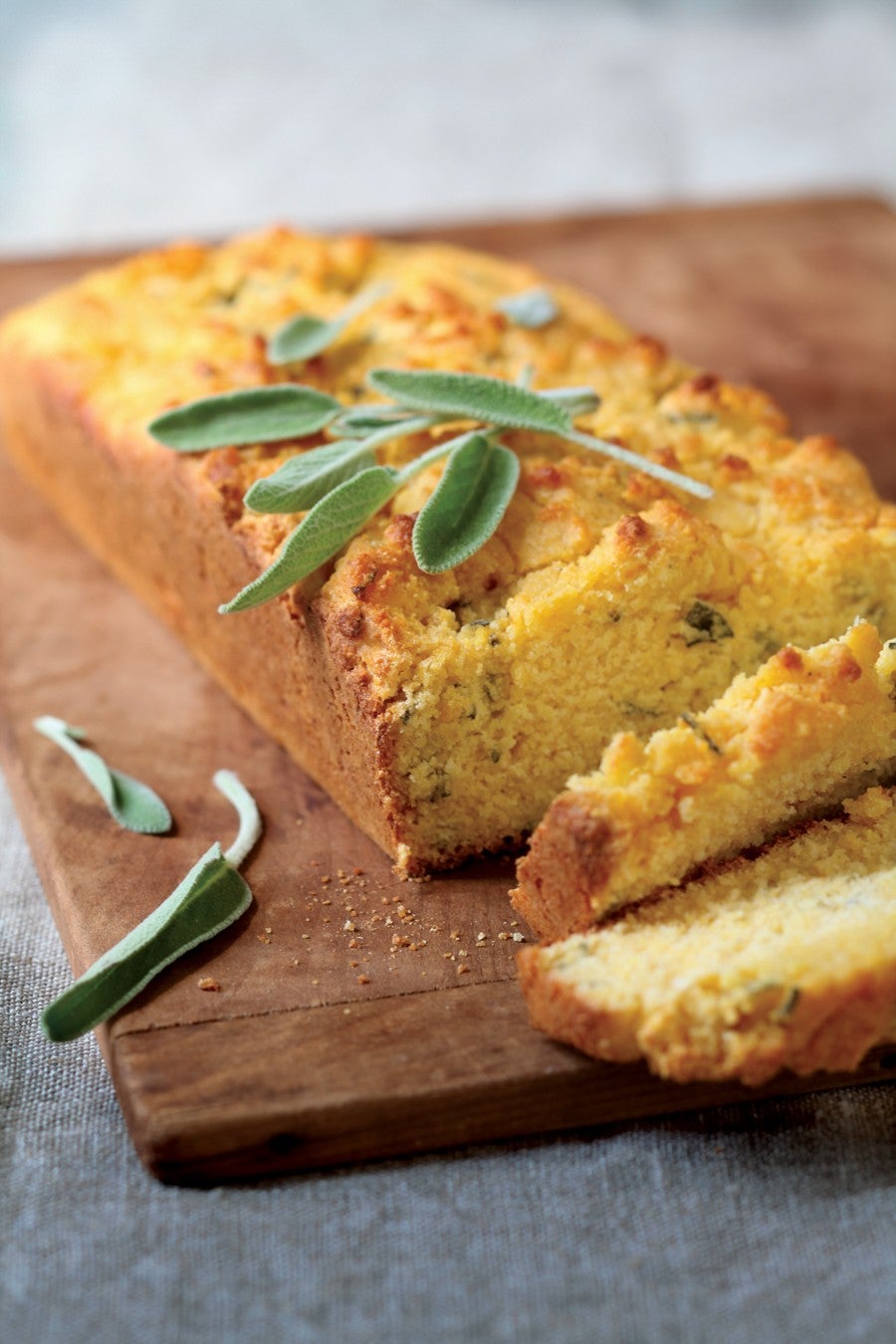Cooking with Cornmeal

Cornmeal is cornmeal is cornmeal, right? Not quite. Although all types of cornmeal are interchangeable, texture varies from grind to grind and some cooks swear by their favorite color.
Yellow, white, or blue? North of the Mason-Dixon line and in Europe, cooks prefer yellow cornmeal for baked goods and polenta (an Italian-style mush made from coarse-grind cornmeal). Many Southern bakers swear by white cornmeal and wouldn’t use anything else in cornbread or pancakes. White cornmeal is also the type used in African cuisines. Blue cornmeal is favored by cooks who like bright colors, hearty flavors, and an extra boost of nutrients.
Stone-ground or steel-milled? “Old-fashioned” or stone-ground cornmeal is crushed between gristmill stones and retains some or all of the corn’s hull and germ. Steel-milled cornmeal is ground between large steel rollers and sifted to remove some or all of the hull and germ.
Coarse, medium, or fine? Mill settings allow for three different-sized meal grinds. Coarsely ground cornmeal gives breads, muffins, and crusted vegetables a tasty crunch. Medium-grind is a safe choice for most recipes; it’s coarse enough to stand in for polenta and to give baked goods that extra crunch, but fine enough to keep batters light and tender. Finely ground cornmeal is sometimes labeled corn flour; it yields the most delicate results and is best for batter-frying or whipping up light-as-air pancakes and fritters that still have a cornmeal taste.
Shopping and Storage Tips
Color and grind are a matter of personal preference, so buy small quantities when trying a new cornmeal type (especially when choosing stone-ground, which can vary widely in taste and texture). The hull and germ in stone-ground cornmeal make it more perishable, so it’s best stored in the freezer in a heavy-duty freezer bag.
RECIPE:
Gluten-Free Sage Cornbread (pictured)